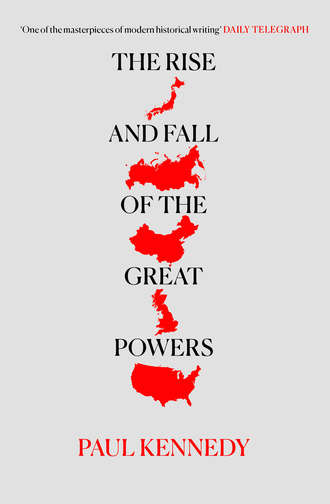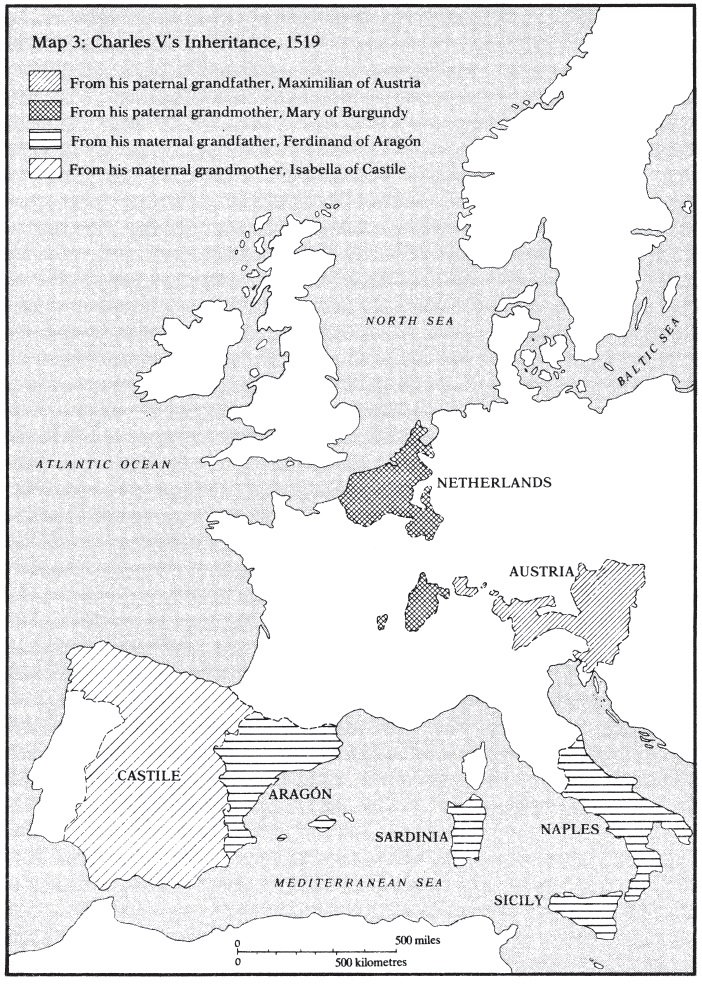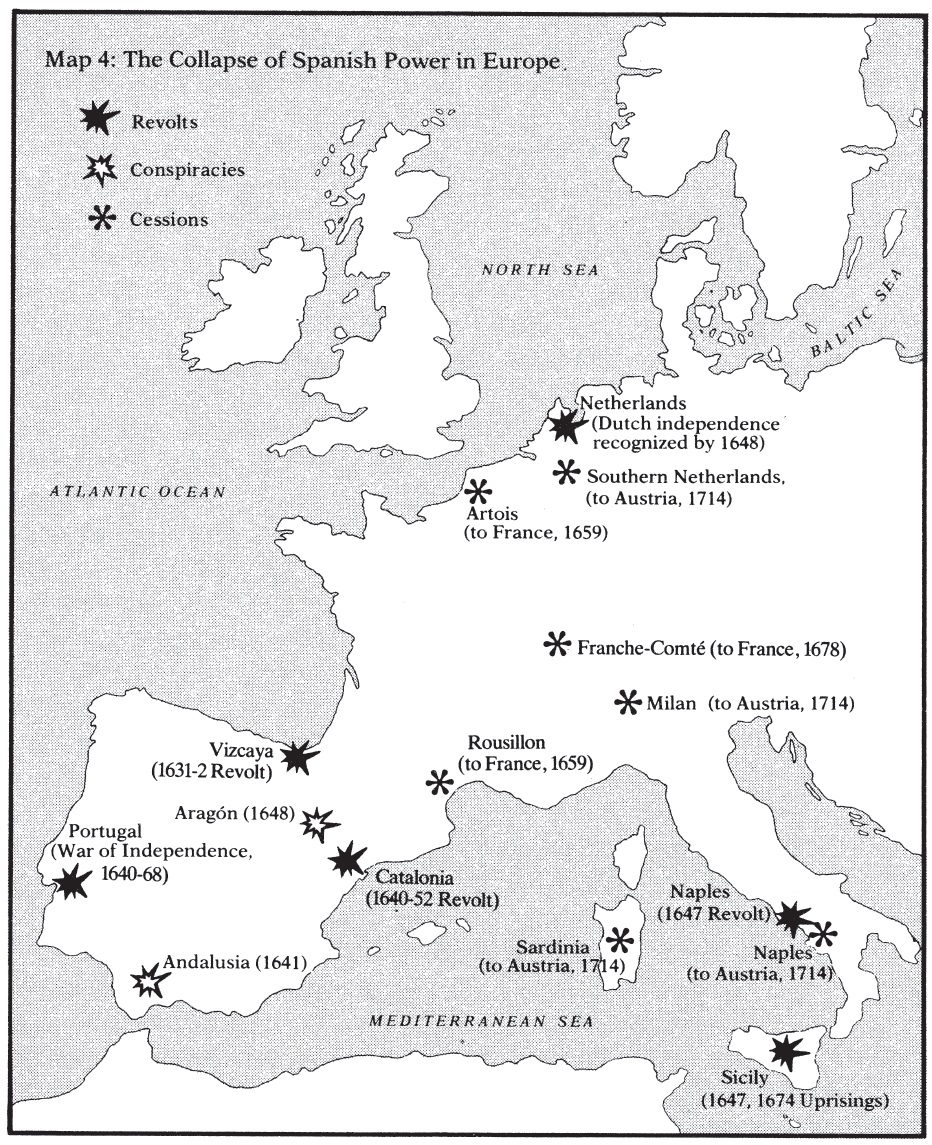
Полная версия
The Rise and Fall of the Great Powers
The sheer heterogeneity and diffusion of these lands, which will be examined further below, might suggest that the Habsburg imperium could never be a real equivalent to the uniform, centralized empires of Asia. Even in the 1520s, Charles was handing over to his younger brother Ferdinand the administration and princely sovereignty of the Austrian hereditary lands, and also of the new acquisitions of Hungary and Bohemia – a recognition, well before Charles’s own abdication, that the Spanish and Austrian inheritances could not be effectively ruled by the same person. Nonetheless, that was not how the other princes and states viewed this mighty agglomeration of Habsburg power. To the Valois kings of France, fresh from consolidating their own authority internally and eager to expand into the rich Italian peninsula, Charles V’s possessions seemed to encircle the French state – and it is hardly an exaggeration to say that the chief aim of the French in Europe over the next two centuries would be to break the influence of the Habsburgs. Similarly, the German princes and electors, who had long struggled against the emperor’s having any real authority within Germany itself, could not but be alarmed when they saw Charles V’s position was buttressed by so many additional territories, which might now give him the resources to impose his will. Many of the popes, too, disliked this accumulation of Habsburg power, even if it was often needed to combat the Turks, the Lutherans, and other foes.

Given the rivalries endemic to the European states system, therefore, it was hardly likely that the Habsburgs would remain unchallenged. What turned this potential for conflict into a bitter and prolonged reality was its conjunction with the religious disputes engendered by the Reformation. For the fact was that the most prominent and powerful Habsburg monarchs over this century and a half – the Emperor Charles V himself and his later successor, Ferdinand II (1619–37), and the Spanish kings Philip II (1556–98) and Philip IV (1621–65) – were also the most militant in the defence of Catholicism. As a consequence, it became virtually impossible to separate the power-political from the religious strands of the European rivalries which racked the continent in this period. As any contemporary could appreciate, had Charles V succeeded in crushing the Protestant princes of Germany in the 1540s, it would have been a victory not only for the Catholic faith but also for Habsburg influence – and the same was true of Philip II’s efforts to suppress the religious unrest in the Netherlands after 1566; and true, for that matter, of the dispatch of the Spanish Armada to invade England in 1588. In sum, national and dynastic rivalries had now fused with religious zeal to make men fight on where earlier they might have been inclined to compromise.
Even so, it may appear a little forced to use the title ‘The Habsburg Bid for Mastery’ to describe the entire period from the accession of Charles V as Holy Roman emperor in 1519 to the Spanish acknowledgement of defeat at the Treaty of the Pyrenees in 1659. Obviously, their enemies did firmly believe that the Habsburg monarchs were bent upon absolute domination. Thus, the Elizabethan writer Francis Bacon could in 1595 luridly describe the ‘ambition and oppression of Spain’:
France is turned upside down … Portugal usurped … The Low Countries warred upon … The like at this day attempted upon Aragon … The poor Indians are brought from free men to be slaves.4
But despite the occasional rhetoric of some Habsburg ministers about a ‘world monarchy’,5 there was no conscious plan to dominate Europe in the manner of Napoleon or Hitler. Some of the Habsburg dynastic marriages and successions were fortuitous, at the most inspired, rather than evidence of a long-term scheme of territorial aggrandizement. In certain cases – for example, the frequent French invasions of northern Italy – Habsburg rulers were more provoked than provoking. In the Mediterranean after the 1540s, Spanish and imperial forces were repeatedly placed on the defensive by the operations of a revived Islam.
Nevertheless, the fact remains that had the Habsburg rulers achieved all of their limited, regional aims – even their defensive aims – the mastery of Europe would virtually have been theirs. The Ottoman Empire would have been pushed back, along the North African coast and out of eastern Mediterranean waters. Heresy would have been suppressed within Germany. The Revolt of the Netherlands would have been crushed. Friendly regimes would have been maintained in France and England. Only Scandinavia, Poland, Muscovy, and the lands still under Ottoman rule would not have been subject to Habsburg power and influence – and the concomitant triumph of the Counter-Reformation. Although Europe even then would not have approached the unity enjoyed by Ming China, the political and religious principles favoured by the twin Habsburg centres of Madrid and Vienna would have greatly eroded the pluralism that had so long been the continent’s most important feature.
The chronology of this century and a half of warfare can be summarized briefly in a work of analysis like this. What probably strikes the eye of the modern reader much more than the names and outcome of various battles (Pavia, Lützen, etc.) is the sheer length of these conflicts. The struggle against the Turks went on decade after decade; Spain’s attempt to crush the Revolt of the Netherlands lasted from the 1560s until 1648, with only a brief intermission, and is referred to in some books as the Eighty Years War; while the great multidimensional conflict undertaken by both Austrian and Spanish Habsburgs against successive coalitions of enemy states from 1618 until the 1648 Peace of Westphalia has always been known as the Thirty Years War. This obviously placed a great emphasis upon the relative capacities of the different states to bear the burdens of war, year after year, decade after decade. And the significance of the material and financial underpinnings of war was made the more critical by the fact that it was in this period that there took place a ‘military revolution’ which transformed the nature of fighting and made it much more expensive than hitherto. The reasons for that change, and the chief features of it, will be discussed shortly. But even before going into a brief outline of events, it is as well to know that the military encounters of (say) the 1520s would appear very small-scale, in terms of both men and money deployed, compared with those of the 1630s.
The first series of major wars focused upon Italy, whose rich and vulnerable city-states had tempted the French monarchs to invade as early as 1494 – and, with equal predictability, had produced various coalitions of rival powers (Spain, the Austrian Habsburgs, even England) to force the French to withdraw.6 In 1519, Spain and France were still quarrelling over the latter’s claim to Milan when the news arrived of Charles V’s election as Holy Roman emperor and of his combined inheritance of the Spanish and Austrian territories of the Habsburg family. This accumulation of titles by his archrival drove the ambitious French king, Francis I (1515–47), to instigate a whole series of countermoves, not just in Italy itself, but also along the borders of Burgundy, the southern Netherlands, and Spain. Francis I’s own plunge into Italy ended in his defeat and capture at the battle of Pavia (1525), but within another four years the French monarch was again leading an army into Italy – and was again checked by Habsburg forces. Although Francis once more renounced his claims to Italy at the 1529 Treaty of Cambrai, he was at war with Charles V over those possessions both in the 1530s and in the 1540s.
Given the imbalance in forces between France and the Habsburg territories at this time, it was probably not too difficult for Charles V to keep blocking these French attempts at expansion. The task became the harder, however, because as Holy Roman emperor he had inherited many other foes. Much the most formidable of these were the Turks, who not only had expanded across the Hungarian plain in the 1520s (and were besieging Vienna in 1529), but also posed a naval threat against Italy and, in conjunction with the Barbary corsairs of North Africa, against the coasts of Spain itself.7 What also aggravated this situation was the tacit and unholy alliance which existed in these decades between the Ottoman sultan and Francis I against the Habsburgs: in 1542, French and Ottoman fleets actually combined in an assault upon Nice.
Charles V’s other great area of difficulty lay in Germany, which had been torn asunder by the Reformation and where Luther’s challenge to the old order was now being supported by a league of Protestant princely states. In view of his other problems, it was scarcely surprising that Charles V could not concentrate his energies upon the Lutheran challenge in Germany until after the mid-1540s. When he did so, he was at first quite successful, especially by defeating the armies of the leading Protestant princes at the battle of Mühlberg (1547). But any enhancement of Habsburg and imperial authority always alarmed Charles V’s rivals, so that the northern German princes, the Turks, Henry II of France (1547–59), and even the papacy all strove to weaken his position. By 1552, French armies had moved into Germany, in support of the Protestant states, who were thereby able to resist the centralizing tendencies of the emperor. This was acknowledged by the Peace of Augsburg (1555), which brought the religious wars in Germany to a temporary end, and by the Treaty of Cateau-Cambresis (1559), which brought the Franco-Spanish conflict to a close. It was also acknowledged, in its way, by Charles V’s own abdications – in 1555 as Holy Roman emperor to his brother Ferdinand I (emperor, 1555–64), and in 1556 as king of Spain in favour of his son Philip II (1556–98). If the Austrian and Spanish branches remained closely related after this time, it now was the case (as the historian Mamatey puts it) that ‘henceforth, like the doubleheaded black eagle in the imperial coat of arms, the Habsburgs had two heads at Vienna and at Madrid, looking east and west’.8
While the eastern branch under Ferdinand I and his successor Maximilian II (emperor, 1564–76) enjoyed relative peace in their possessions (save for a Turkish assault of 1566–7), the western branch under Philip II of Spain was far less fortunate. The Barbary corsairs were attacking the coasts of Portugal and Castile, and behind them the Turks were resuming their struggle for the Mediterranean. In consequence, Spain found itself repeatedly committed to major new wars against the powerful Ottoman Empire, from the 1560 expedition to Djerba, through the tussle over Malta in 1565, the Lepanto campaign of 1571, and the dingdong battle over Tunis, until the eventual truce of 1581.9 At virtually the same time, however, Philip’s policies of religious intolerance and increased taxation had kindled the discontents in the Habsburg-owned Netherlands into an open revolt. The breakdown of Spanish authority there by the mid-1560s was answered by the dispatch northward of an army under the Duke of Alba and by the imposition of a military despotism – in turn provoking full-scale resistance in the seagirt, defensible Dutch provinces of Holland and Zeeland, and causing alarm in England, France, and northern Germany about Spanish intentions. The English were even more perturbed when, in 1580, Philip II annexed neighbouring Portugal, with its colonies and its fleet. Yet, as with all other attempts of the Habsburgs to assert (or extend) their authority, the predictable result was that their many rivals felt obliged to come in, to prevent the balance of power becoming too deranged. By the 1580s, what had earlier been a local rebellion by Dutch Protestants against Spanish rule had widened into a new international struggle.10 In the Netherlands itself, the warfare of siege and countersiege continued, without spectacular results. Across the Channel, in England, Elizabeth I had checked any internal (whether Spanish or papal-backed) threats to her authority and was lending military support to the Dutch rebels. In France, the weakening of the monarchy had led to the outbreak of a bitter religious civil war, with the Catholic League (supported by Spain) and their rivals the Huguenots (supported by Elizabeth and the Dutch) struggling for supremacy. At sea, Dutch and English privateers interrupted the Spanish supply route to the Netherlands, and took the fight farther afield, to West Africa and the Caribbean.
At some periods in the struggle, especially in the late 1580s and early 1590s, it looked as if the powerful Spanish campaign would succeed; in September 1590, for example, Spanish armies were operating in Languedoc and Brittany, and another army under the outstanding commander the Duke of Parma was marching upon Paris from the north. Nevertheless, the lines of the anti-Spanish forces held, even under that sort of pressure. The charismatic French Huguenot claimant to the crown of France, Henry of Navarre, was flexible enough to switch from Protestantism to Catholicism to boost his claims – and then to lead an ever-increasing part of the French nation against the invading Spaniards and the discredited Catholic League. By the 1598 Peace of Vervins – the year of the death of Philip II of Spain – Madrid agreed to abandon all interference in France. By that time, too, the England of Elizabeth was also secure. The great Armada of 1588, and two later Spanish invasion attempts, had failed miserably – as had the effort to exploit a Catholic rebellion in Ireland, which Elizabeth’s armies were steadily reconquering. In 1604, with both Philip II and Elizabeth dead, Spain and England came to a compromise peace. It would take another five years, until the truce of 1609, before Madrid negotiated with the Dutch rebels for peace; but well before then it had become clear that Spanish power was insufficient to crush the Netherlands, either by sea or through the strongly held land (and watery) defences manned by Maurice of Nassau’s efficient Dutch army. The continued existence of all three states, France, England, and the United Provinces of the Netherlands, each with the potential to dispute Habsburg pretensions in the future, again confirmed that the Europe of 1600 would consist of many nations, and not of one hegemony.
The third great spasm of wars which convulsed Europe in this period occurred after 1618, and fell very heavily upon Germany. That land had been spared an all-out confessional struggle in the late sixteenth century, but only because of the weakening authority and intellect of Rudolf II (Holy Roman emperor, 1576–1612) and a renewal of a Turkish threat in the Danube basin (1593–1606). Behind the facade of German unity, however, the rival Catholic and Protestant forces were manoeuvring to strengthen their own position and to weaken that of their foes. As the seventeenth century unfolded, the rivalry between the Evangelical Union (founded in 1608) and the Catholic League (1609) intensified. Moreover, because the Spanish Habsburgs strongly supported their Austrian cousins, and because the head of the Evangelical Union, the Elector Palatine Frederick IV, had ties with both England and the Netherlands, it appeared as if most of the states of Europe were lining up for a final settlement of their political-religious antagonisms.11
The 1618 revolt of the Protestant estates of Bohemia against their new Catholic ruler, Ferdinand II (emperor 1619–37), therefore provided the spark needed to begin another round of ferocious religious struggles: the Thirty Years War of 1618–48. In the early stages of this contest, the emperor’s forces fared well, ably assisted by a Spanish-Habsburg army under General Spinola. But, in consequence, a heterogeneous combination of religious and worldly forces entered the conflict, once again eager to adjust the balances in the opposite direction. The Dutch, who ended their 1609 truce with Spain in 1621, moved into the Rhineland to counter Spinola’s army. In 1626, a Danish force under its monarch Christian IV invaded Germany from the north. Behind the scenes, the influential French statesman Cardinal Richelieu sought to stir up trouble for the Habsburgs wherever he could. However, none of these military or diplomatic countermoves were very successful, and by the late 1620s the Emperor Ferdinand’s powerful lieutenant, Wallenstein, seemed well on the way to imposing an all-embracing, centralized authority on Germany, even as far north as the Baltic shores.12
Yet this rapid accumulation of imperial power merely provoked the House of Habsburg’s many enemies to strive the harder. In the early 1630s by far the most decisive of them was the attractive and influential Swedish king, Gustavus Adolphus II (1611–32), whose well-trained army moved into northern Germany in 1630 and then burst southward to the Rhineland and Bavaria in the following year. Although Gustavus himself was killed at the battle of Lützen in 1632, this in no way diminished the considerable Swedish role in Germany – or, indeed, the overall dimensions of the war. On the contrary, by 1634 the Spaniards under Philip IV (1621–65) and his accomplished first minister, the Count-Duke of Olivares, had decided to aid their Austrian cousins much more thoroughly than before; but their dispatch into the Rhineland of a powerful Spanish army under its general, the Cardenal-Infante, in turn forced Richelieu to decide upon direct French involvement, ordering troops across various frontiers in 1635. For years beforehand, France had been the tacit, indirect leader of the anti-Habsburg coalition, sending subsidies to all who would fight the imperial and Spanish forces. Now the conflict was out in the open, and each coalition began to mobilize even more troops, arms, and money. The language correspondingly became stiffer. ‘Either all is lost, or else Castile will be head of the world’, wrote Olivares in 1635, as he planned the triple invasion of France in the following year.13
The conquest of an area as large as France was, however, beyond the military capacities of the Habsburg forces, which briefly approached Paris but were soon hard stretched across Europe. Swedish and German troops were pressing the imperial armies in the north. The Dutch and the French were ‘pincering’ the Spanish Netherlands. Moreover, a revolt by the Portuguese in 1640 diverted a steady flow of Spanish troops and resources from northern Europe to much nearer home, although they were never enough to achieve the reunification of the peninsula. Indeed, with the parallel rebellion of the Catalans – which the French gladly aided – there was some danger of a disintegration of the Spanish heartland by the early 1640s. Overseas, Dutch maritime expeditions struck at Brazil, Angola, and Ceylon, turning the conflict into what some historians describe as the first global war.14 If the latter actions brought gains to the Netherlands, most of the other belligerents were by this time suffering heavily from the long years of military effort; the armies of the 1640s were becoming smaller than those of the 1630s, the financial expedients of governments were the more desperate, the patience of the people was much thinner and their protests much more violent. Yet precisely because of the interlinked nature of the struggle, it was difficult for any one participant to withdraw. Many of the Protestant German states would have done just that, had they been certain that the Swedish armies would also cease fighting and go home; and Olivares and other Spanish statesmen would have negotiated a truce with France, but the latter would not desert the Dutch. Secret peace negotiations at various levels were carried out in parallel with military campaigns on various fronts, and each power consoled itself with the thought that another victory would buttress its claims in the general settlement.
The end of the Thirty Years War was, in consequence, an untidy affair. Spain suddenly made peace with the Dutch early in 1648, finally recognizing their full independence; but this was done to deprive France of an ally, and the Franco-Habsburg struggle continued. It became purely a Franco-Spanish one later in the year when the Peace of Westphalia at last brought tranquillity to Germany, and allowed the Austrian Habsburgs to retire from the conflict. While individual states and rulers made certain gains (and suffered certain losses), the essence of the Westphalian settlement was to acknowledge the religious and political balance within the Holy Roman Empire, and thus to confirm the limitations upon imperial authority. This left France and Spain engaged in a war which was all to do with national rivalries and nothing to do with religion – as Richelieu’s successor, the French minister, Mazarin, clearly demonstrated in 1655 by allying with Cromwell’s Protestant England to deliver the blows which finally caused the Spaniards to agree to a peace. The conditions of the Treaty of the Pyrenees (1659) were not particularly harsh, but in forcing Spain to come to terms with its great archenemy, they revealed that the age of Habsburg predominance in Europe was over. All that was left as a ‘war aim’ for Philip IV’s government then was the preservation of Iberian unity, and even this had to be abandoned in 1668, when Portugal’s independence was formally recognized.15 The continent’s political fragmentation thus remained in much the same state as had existed at Charles V’s accession in 1519, although Spain itself was to suffer from further rebellions and losses of territory as the seventeenth century moved to its close (see Map 4) – paying the price, as it were, for its original strategical overextension.
Strengths and Weaknesses of the Habsburg Bloc
Why did the Habsburgs fail?16 This issue is so large and the process was so lengthy that there seems little point in looking for personal reasons like the madness of the Emperor Rudolf II, or the incompetence of Philip III of Spain. It is also difficult to argue that the Habsburg dynasty and its higher officers were especially deficient when one considers the failings of many a contemporary French and English monarch, and the venality or idiocy of some of the German princes. The puzzle appears the greater when one recalls the vast accumulation of material power available to the Habsburgs:
Charles V’s inheritance of the crowns of four major dynasties, Castile, Aragon, Burgundy, and Austria, the later acquisitions by his house of the crowns of Bohemia, Hungary, Portugal, and, for a short time, even of England, and the coincidence of these dynastic events with the Spanish conquest and exploitation of the New World – these provided the house of Habsburg with a wealth of resources that no other European power could match.17

Given the many gaps and inaccuracies in available statistics, one should not place too much reliance upon the population figures of this time; but it would be fair to assume that about one-quarter of the peoples of early-modern Europe were living in Habsburg-ruled territory. However, such crude totals* were less important than the wealth of the regions in question, and here the dynastic inheritance seemed to have been blessed with riches.
There were five chief sources of Habsburg finance, and several smaller ones. By far the most important was the Spanish inheritance of Castile, since it was directly ruled and regular taxes of various sorts (the sales tax, the ‘crusade’ tax on religious property) had been conceded to the crown by the Cortes and the church. In addition, there were the two richest trading areas of Europe – the Italian states and the Low Countries – which could provide comparatively large funds from their mercantile wealth and mobile capital. The fourth source, increasingly important as time went on, was the revenue from the American empire. The ‘royal fifth’ of the silver and gold mined there, together with the sales tax, custom duties, and church levies in the New World, provided a vast bonus to the kings of Spain, not only directly but also indirectly, for the American treasures which went into private hands, whether Spanish or Flemish or Italian, helped those individuals and concerns to pay the increasing state taxes levied upon them, and in times of emergency, the monarch could always borrow heavily from the bankers in the expectation of paying off his debts when the silver fleet arrived. The fact that the Habsburg territories contained the leading financial and mercantile houses – those of southern Germany, of certain of the Italian cities, and of Antwerp – must be counted as an additional advantage, and as the fifth major source of income.18 It was certainly more readily accessible than, say, revenues from Germany, where the princes and free cities represented in the Reichstag voted money to the emperor only if the Turks were at the door.19







